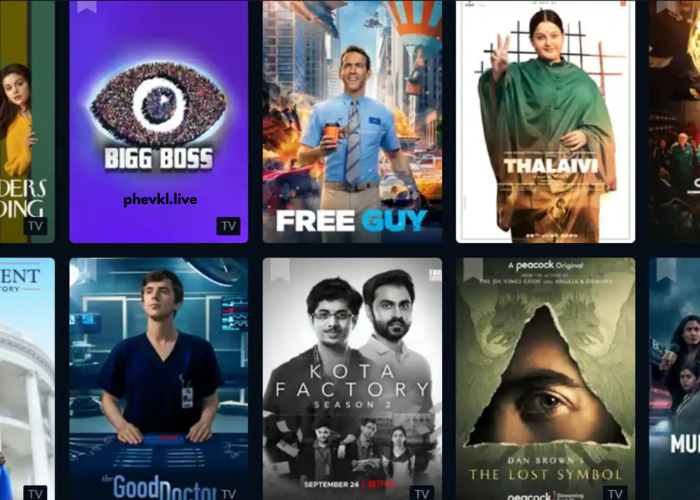
Managing your money wisely is no longer just a good idea—it’s a necessity. Whether you’re looking to get out of debt, save for a big purchase, or simply understand where your money is going, budgeting is the first and most powerful step. In this comprehensive, step-by-step guide, you’ll learn how to budget like a pro and take full control of your financial life.
Why Budgeting is a Game-Changer
Before diving into the steps, it’s essential to understand why budgeting matters. A solid budget provides financial clarity, reduces stress, improves your spending habits, and helps you reach your goals faster.
Financial Clarity and Awareness
Budgeting gives you a clear picture of your income and expenses. You’ll know exactly where your money is going and how much is left at the end of the month.
Better Spending Decisions
When you track your expenses, it becomes easier to avoid unnecessary purchases and impulse buys. Budgeting helps you prioritize what truly matters.
Accelerated Goal Achievement
Saving for a house, car, vacation, or emergency fund becomes much easier with a structured plan in place. Budgeting aligns your daily habits with your long-term goals.
Step 1: Determine Your Financial Goals
Before you begin crunching numbers, it’s important to define short-term and long-term financial goals.
Short-Term Goals
These include paying off small debts, saving for a vacation, or building an emergency fund. Timeframe: 1–12 months.
Long-Term Goals
Think about home ownership, retirement savings, or your child’s education fund. Timeframe: 1 year to several decades.
By knowing what you’re working toward, you’ll be more motivated to stick to your budget.
Step 2: Calculate Your Monthly Income
Understanding your income is the cornerstone of successful budgeting.
Include All Sources of Income
This could be:
-
Salary (after taxes)
-
Freelance earnings
-
Side hustles
-
Investment dividends
-
Child support or alimony
Knowing your exact monthly income sets the stage for realistic financial planning.
Step 3: Track All Your Expenses
This step might feel tedious, but it’s essential. It allows you to identify spending patterns and spot areas for improvement.
Categorize Your Expenses
Break down your expenses into the following categories:
-
Fixed Expenses (rent/mortgage, insurance, subscriptions)
-
Variable Expenses (groceries, utilities, fuel)
-
Discretionary Expenses (eating out, entertainment, shopping)
Use a spreadsheet, budgeting app (like Mint, YNAB, or PocketGuard), or a simple notebook to record every single expense for at least one month.
Step 4: Choose a Budgeting Method That Works for You
Different budgeting methods work for different personalities and lifestyles. Here are the most popular options:
50/30/20 Rule
-
50% for needs
-
30% for wants
-
20% for savings and debt repayment
Zero-Based Budget
Assign every dollar a purpose until there’s zero left. Great for people who want total control of every cent.
Envelope System
Use cash for each category and keep it in separate envelopes. When the envelope is empty, no more spending in that category.
Pay-Yourself-First
Automatically transfer a fixed amount to savings as soon as you get paid. Spend what’s left after saving.
Choose the method that matches your financial goals and personality.
Step 5: Create Your Monthly Budget Plan
With your income, expenses, and budgeting method in hand, you can now build your monthly budget.
List Your Income
Start with your total monthly income at the top of your budget.
Allocate for Fixed Expenses
List your monthly fixed expenses and subtract them from your income.
Estimate Variable Expenses
Based on your tracking from Step 3, assign realistic amounts for variable categories.
Add a Buffer
Always leave a small buffer ($50–$100) for unexpected expenses that don’t fall into any category.
Prioritize Savings
Include a line item for savings, investments, or debt repayments. Treat this like a bill—you must pay it every month.
Step 6: Automate and Simplify
Automation can significantly improve budgeting success by removing human error and forgetfulness.
Automate Bill Payments
Set up automatic payments for rent, utilities, insurance, and other recurring bills.
Automate Savings
Create automatic transfers from your checking to your savings or investment accounts on payday.
Use Budgeting Tools
Apps like YNAB, EveryDollar, and GoodBudget can sync with your bank account and categorize your spending automatically.
Step 7: Review and Adjust Weekly
Budgeting isn’t a “set it and forget it” process. To budget like a pro, you need to regularly check in and make adjustments.
Weekly Check-Ins
Spend 10–15 minutes every week reviewing your budget. Are you on track? Did any unexpected expenses come up?
Monthly Reviews
At the end of each month, review what worked and what didn’t. Adjust your next month’s budget accordingly.
Adjust for Seasonal Spending
Holidays, birthdays, and seasonal expenses can disrupt your budget. Prepare in advance by creating specific savings categories.
Step 8: Cut Unnecessary Expenses
Once you start tracking, you’ll spot areas where you’re overspending. This is your chance to make impactful changes.
Audit Your Subscriptions
Are you actually using all your streaming services or gym memberships? Cancel what you don’t need.
Eat Out Less
Even cutting back from 4 meals a week to 2 can save you hundreds of dollars monthly.
Shop Smarter
Look for sales, use coupons, and buy in bulk. Try not to buy anything unless it’s on your list.
Step 9: Build an Emergency Fund
An emergency fund is your financial safety net. Life is unpredictable—this fund ensures that emergencies don’t derail your budget.
How Much Should You Save?
Start with $500 to $1000. Eventually, aim for 3–6 months’ worth of living expenses.
Where to Keep It
Put your emergency fund in a high-yield savings account—accessible but separate from your everyday money.
Step 10: Tackle Debt Strategically
Debt repayment is a critical component of financial freedom. Choose a proven method to chip away at what you owe.
Snowball Method
Pay off the smallest debt first while making minimum payments on the rest. Motivational and fast.
Avalanche Method
Pay off the debt with the highest interest rate first. Mathematically the most cost-effective.
Consolidation
If you have multiple debts, consolidating them into one loan with a lower interest rate can simplify repayment.
Step 11: Make Budgeting a Lifestyle
The most successful budgeters view it as a long-term habit, not a one-time fix.
Involve Your Family
If you live with a partner or kids, involve them in the process. Shared goals lead to stronger financial discipline.
Stay Educated
Follow financial experts, read blogs, or watch videos to stay motivated and updated with new strategies.
Celebrate Milestones
Paid off a credit card? Saved $5,000? Celebrate your wins—they keep you motivated for the long haul.
Common Budgeting Mistakes to Avoid
Even experienced budgeters can fall into traps. Here’s what to watch out for:
Underestimating Expenses
Always round up, not down. It’s better to overprepare than to come up short.
Forgetting Irregular Expenses
Car maintenance, gifts, and annual subscriptions should be accounted for in a “miscellaneous” or sinking fund.
Being Too Rigid
Life happens. Your budget should adapt, not collapse. Flexibility is key.
Tools and Resources for Pro Budgeting
Here are some helpful tools and resources to elevate your budgeting journey:
Budgeting Apps
-
YNAB (You Need A Budget)
-
Mint
-
EveryDollar
-
PocketGuard
-
GoodBudget
Spreadsheets
Google Sheets or Excel budget templates can be customized and reused monthly.
Books
-
The Total Money Makeover by Dave Ramsey
-
Your Money or Your Life by Vicki Robin
-
I Will Teach You To Be Rich by Ramit Sethi
Final Thoughts: Budgeting is Empowering
Budgeting isn’t about restrictions—it’s about freedom and intention. When you know where your money is going, you gain confidence, clarity, and control over your life. It allows you to make informed choices, reduce financial anxiety, and build the life you truly want.
Start today, stick with it, and remember—even small changes can lead to big results. That’s how you truly budget like a pro.






